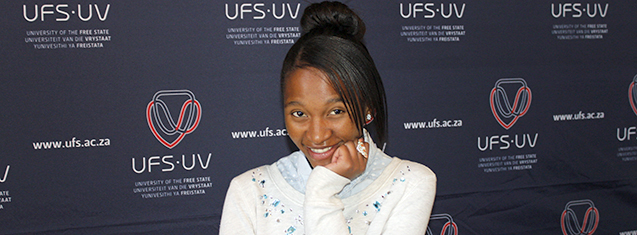
Kovsies #FaceOfFacebook was born three years ago out of a need to engage with students, and become a virtual friend. Auditions are held every year to choose the new ‘face’ representing the UFS on Facebook. The successful candidate holds the title as #FaceOfFacebook for the next 12 months, attending events, and filming short video clips to post on our Facebook page.
The votes have been counted, and we have a winner. After much excitement and a close contest, Nompumelelo Maseko (whose name, fittingly, means ‘success’) emerged victorious from the top six contestants selected by our panel of judges. We sat down with the soft-spoken Mpumi – as her friends call her – to get a sense of the person who will be our ambassador for the next year.
What is your field of study, and how far along are you?
I am studying for a BSc degree in Genetics, and I’m currently in my second year. I have a particular interest in the forensic sciences, which fascinate me!
Are you originally from Bloemfontein?
No, I am originally from Pretoria.
How is it that you ended up here, studying at the UFS?
Before leaving school, I applied to various universities, but my desires and ambitions brought me here.
How do you find your residence?
Akasia ladies are big on sisterhood, very supportive. Res life is very enjoyable.
What do you hope to accomplish during your term as the #FaceOfFacebook?
I would like to help people become aware of what is taking place on campus. There are many opportunities to be more engaged with what is happening at the varsity. For instance, there are still many people who don’t really know what the #FaceOfFacebook is, and I would like to help inform them about it.
What is your motivation in your studies, in taking part in this contest, and in life?
I am intrigued by the function of life forms, the differences that exist at a cellular level.
For this competition, I fed off my love of people, even though I am shy. I also enjoy presenting.
I have my parents to thank as my motivation, as well as meeting and engaging with people. I find that I achieve a broader perspective when I don’t restrict myself to my own opinions, but strive to be open to differing views.
Nompumelelo will be appearing in one of her first Facebook videos shortly, so be sure to keep an eye on our Facebook page.